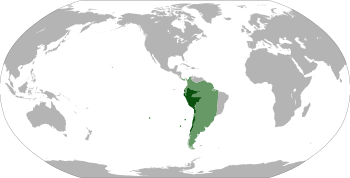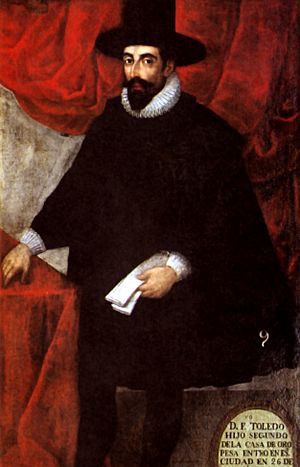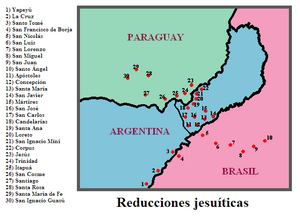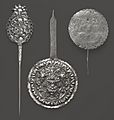Viceroyalty of Perú facts for kids
Quick facts for kids
Viceroyalty of Peru
Virreinato del Perú
|
|||||||||||||
|---|---|---|---|---|---|---|---|---|---|---|---|---|---|
| 1542–1824 | |||||||||||||
|
Military flag
|
|||||||||||||

Location of the Viceroyalty of Peru: initial (light green) and final de jure territory (dark green)
|
|||||||||||||
| Status | Spanish colony | ||||||||||||
| Capital | Lima | ||||||||||||
| Common languages | Official: Spanish; commons: Quechua, Aymara, Puquina. | ||||||||||||
| Religion | Roman Catholicism | ||||||||||||
| Government | Monarchy | ||||||||||||
| King | |||||||||||||
|
• 1542 - 1566
|
Charles I | ||||||||||||
|
• 1813 - 1821
|
Ferdinand VII | ||||||||||||
| Viceroy | |||||||||||||
|
• 1544 - 1546
|
Blasco Núñez Vela | ||||||||||||
|
• 1821 - 1824
|
José de la Serna e Hinojosa | ||||||||||||
| Historical era | Spanish Empire | ||||||||||||
|
• Established
|
1542 | ||||||||||||
|
• Fall of Vilcabamba
|
1572 | ||||||||||||
| July 28 1824 | |||||||||||||
|
|||||||||||||
The Viceroyalty of Peru (in Spanish, Virreinato del Perú) was a large area in South America controlled by Spain. It was created in 1542 and was one of the most important parts of the Spanish Empire. The capital city was Lima, where the main ruler, called the Viceroy, lived.
Contents
History of the Viceroyalty
In 1542, Spain created a new colony called the Viceroyalty of New Castilla. Soon after, its name changed to the Viceroyalty of Peru. In 1544, King Charles I of Spain chose Blasco Núñez Vela to be the first Viceroy.
The Viceroyalty truly became organized when Viceroy Francisco de Toledo arrived in 1572. He was a great leader who set up many rules and systems. He created laws that applied to both Spanish people and native people. He also worked to reduce the power of rich landowners and change the old system of forced labor. To make the area safer, he built forts and bridges. He also created a navy, called la Armada del Mar del Sur, to protect against pirates.
Changing Borders
The Amazon basin was considered Spanish land because of an old agreement called the Treaty of Tordesillas. However, this agreement became less important when Spain also controlled Portugal (from 1580 to 1640).
Portuguese explorers, called Bandeirantes, slowly moved into the Amazon area. They also went into the nearby Matto Grosso region in the 1600s and 1700s. These groups were hard for Spanish leaders to control. This was because the areas were far away and could be reached by rivers from Portuguese territory.
One famous attack by these groups in 1628 led to many native people losing their freedom. Over time, the Portuguese used these groups to take over more land. This was like a slow war for territory. Finally, in 1750, a new agreement called the Treaty of Madrid officially gave much of the Amazon basin to Portugal.
End of the Viceroyalty
Over many years, the Viceroyalty of Peru changed in size. In 1717, a new viceroyalty called New Granada was created. Then, in 1776, the Viceroyalty of the Río de la Plata was also formed. These changes made the Viceroyalty of Peru smaller.
The Viceroyalty of Peru ended in 1824. This happened after the Peruvian War of Independence, when Peru became an independent country.
Related Pages
Images for kids
-
Charles I, King of Spain. The Viceroyalty of Peru started during his rule.
-
The Marquess of Salinas del Río Pisuerga, an important Viceroy of Peru.
-
The Battle of Ayacucho, a key battle for independence.
-
Santa Rosa de Lima, a very important saint from Peru.
See also
 In Spanish: Virreinato del Perú para niños
In Spanish: Virreinato del Perú para niños












